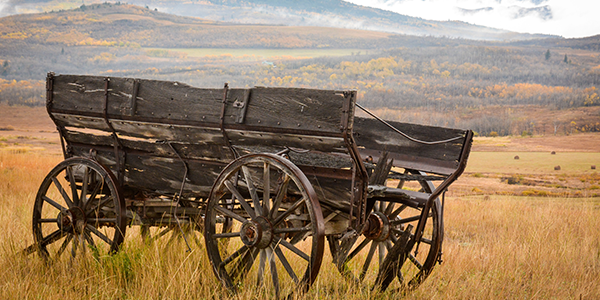Ever wondered where early Colorado Cowboys and settlers get there food? From the chuckwagon of course! The chuckwagon was historically a type of field kitchen in a covered wagon. They were once used for the storage and transportation of food and cooking equipment on the prairies. They would line up in a wagon train for feeding workers—an old version of food trucks today. Continue reading for everything you need to know about the history of the chuckwagon. Also, if you are looking for a horse property for sale in Colorado, contact Colorado Horse Property today and speak with one of our horse-person realtors.
History of the Chuckwagon
There were mobile kitchens before the chuckwagon, but weren’t as elaborate. Charles Goodnight invented the chuckwagon in 1866. Goodnight was a Texas rancher known as the father of the Texas Panhandle. Goodnight created the chuckwagon from a Studebaker covered-wagon, a durable Civil War army-surplus wagon. He wanted it to suit the needs of cowboys driving cattle from Texas to sell in New Mexico. What made the chuckwagon unique was the addition of the “chuck box.” This was a set of drawers and shelves for storage space with a hinged lid to provide a flat working surface.
Cook provided many different types of foods out of chuckwagons. The food typically included easy-to-preserve items like beans and salted meats, coffee, and sourdough biscuits. Workers gathered food on the wagon’s route to cook and serve later. However, not everything was available. There was no fresh fruit, vegetables, or eggs available and meat was not fresh unless an animal was injured during the run and therefore had to be killed. The meat they ate was greasy cloth-wrapped bacon, salt pork, and beef, usually dried, salted or smoked.

